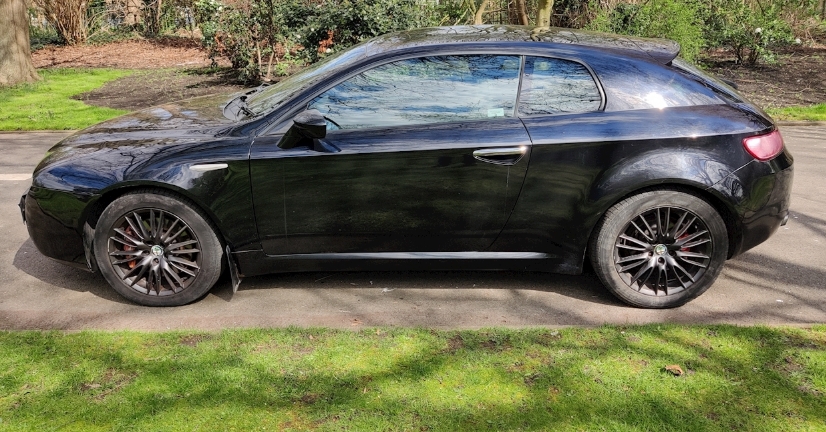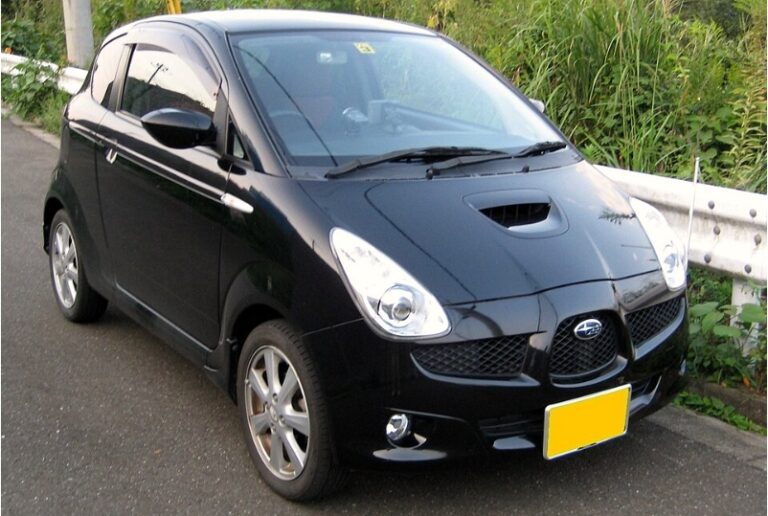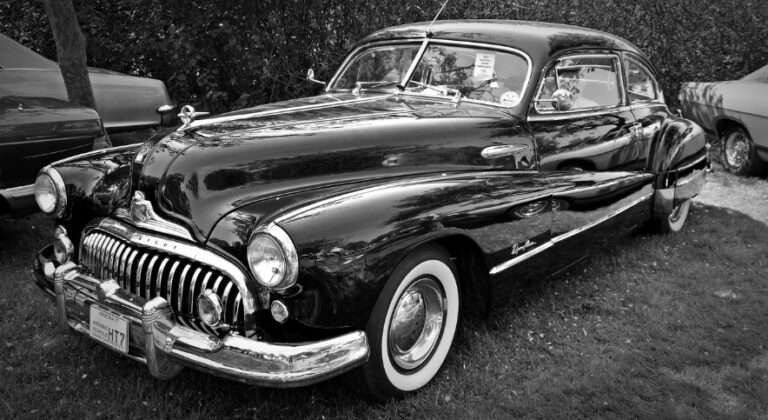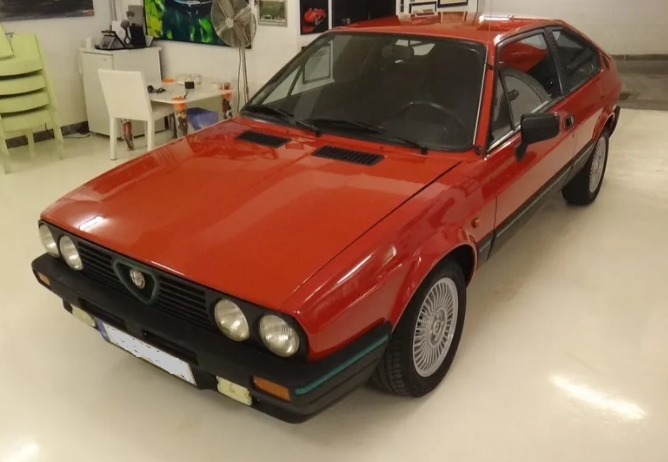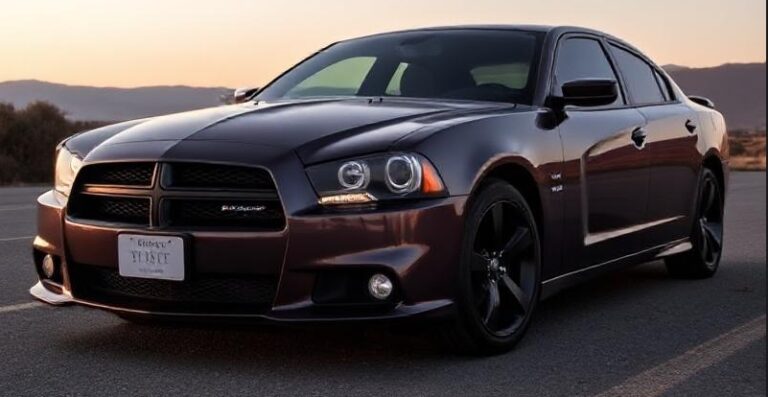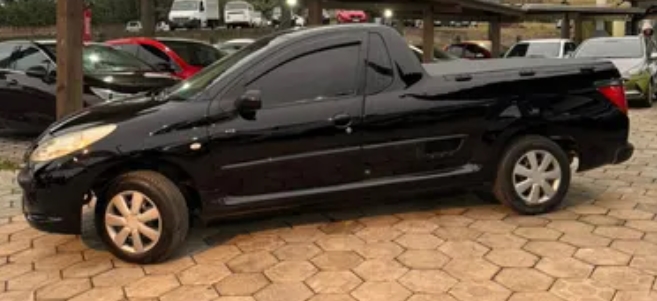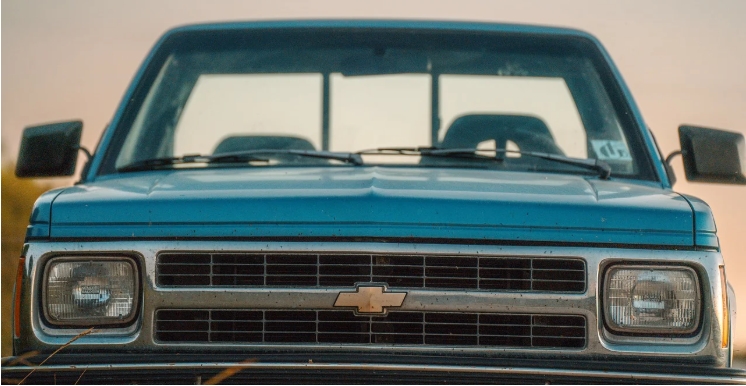The Sculpted Serpent: An Evolution of the Alfa Romeo Brera
The Alfa Romeo Brera. Even the name evokes a certain allure, a promise of Italian passion woven into metal and glass. For a car that graced our roads for a relatively short period, from 2005 to 2010, the Brera left an indelible mark. It was a statement piece, a car designed not just for transport, but for admiration. This is the story of its evolution, a tale of ambition, engineering, and the enduring spirit of Alfa Romeo.
The Genesis: A Concept’s Dream (2003-2005)
The Brera’s story doesn’t begin on the assembly line, but on the drawing board and at motor shows. Its lineage traces back to the stunning Alfa Romeo Brera coupé concept, unveiled at the 2003 Geneva Motor Show. Designed by Giorgetto Giugiaro of Italdesign Giugiaro, the concept car was a breathtaking vision. Its flowing lines, aggressive stance, and distinctive “Scudetto” grille were instantly recognizable as Alfa Romeo, yet pushed the boundaries of modern automotive design. The concept featured a powerful 400 bhp Supercharged V8 engine, hinting at the performance aspirations that would eventually trickle down to the production model.
The response to the concept was overwhelmingly positive. Enthusiasts and critics alike clamored for a production version, and Alfa Romeo, eager to re-establish its sporting credentials and appeal to a more premium market segment, heeded the call. However, the path from concept to reality is rarely a straight one. The production Brera would need to be more practical, more manufacturable, and crucially, fit within the established mechanical underpinnings of the Fiat Group.
.

.
The Production Era Begins: A Scandinavian Heart with Italian Soul (2005-2008)
The production Alfa Romeo Brera officially debuted in 2005, initially arriving in European showrooms. It was a significant departure from many contemporary coupé designs, opting for a more muscular, almost predatory stance. The signature triple headlights, a hallmark of the concept, were retained, as was the deeply sculpted bodywork that seemed to ripple with potential energy. The panoramic glass roof, a standard feature on many models, further accentuated the Brera’s theatrical presence, bathing the interior in light and offering a unique connection to the outside world.
Crucially, the production Brera did not inherit the V8 of the concept. Instead, it was built on the GM/Fiat Premium Platform, shared with the Alfa Romeo 159 and the then-new Fiat Croma. This meant a range of European-sourced engines were on offer.
The initial launch saw two engine options:
- Alfa Romeo Brera 2.2 JTS (2005-2008): This was the entry-level gasoline engine, a naturally aspirated 2.2-liter inline-four producing around 185 bhp. The “JTS” (Jet Thrust Stoichiometric) designation referred to Alfa Romeo’s direct injection technology. This engine provided a respectable balance of performance and economy, making the Brera accessible to a wider audience. It was typically paired with a 6-speed manual gearbox.
- Alfa Romeo Brera 3.2 V6 JTS (2005-2008): The more potent option was a 3.2-liter naturally aspirated V6 engine, a General Motors-sourced unit that also found its way into other Fiat Group vehicles. This engine delivered around 260 bhp and was available with either a 6-speed manual or, a notable addition to the Alfa Romeo lineup, a 6-speed automatic gearbox (a “Q-Tronic” unit). This V6 was available in both front-wheel drive and, in a significant move for Alfa Romeo, with the sophisticated “Q4” all-wheel drive system. The Q4 system, which featured a Torsen T-3 central differential, provided enhanced traction and stability, particularly in adverse conditions, and became a signature feature of the higher-performance Brera models.
Trim Levels and Refinements: Adding Layers to the Design (2005-2008)
Within these initial years, Alfa Romeo offered various trim levels, primarily focusing on interior appointments and features to differentiate the Brera’s positioning. While specific nomenclature could vary slightly by market and evolve over time, common themes included:
- Base/Standard: Typically featured the core design and essential equipment. This would have included power windows, electric mirrors, air conditioning, and a basic infotainment system.
- Lusso: This trim level elevated the interior experience with premium materials like leather upholstery, upgraded dashboard trim, and often, larger alloy wheels. It aimed to offer a more luxurious and comfortable cabin.
- Ti (Turismo Internazionale): This performance-oriented trim level often included sportier suspension settings, larger wheels, distinctive exterior styling cues (like badges or specific body kits), and sportier interior touches such as sculpted seats and aluminum pedals. The Ti designation has a long and proud history within Alfa Romeo, reserved for their most sporting models.
Throughout this period, the Brera’s design remained largely consistent, a testament to Giugiaro’s timeless styling. However, subtle tweaks to wheel designs, color options, and interior trim packages allowed for a degree of personalization.
The Arrival of the Spider: Open-Top Allure (2006-2010)
In 2006, Alfa Romeo expanded the Brera family with the introduction of the Alfa Romeo Brera Spider. This drop-top variant shared the Brera’s distinctive front-end styling and overall character but featured a unique rear-end design. The Spider’s development was handled by Pininfarina, another legendary Italian design house, and it showcased a more flowing, elegant profile compared to its coupé sibling.
The Brera Spider was initially launched with the same engine options as the coupé: the 2.2 JTS and the 3.2 V6 JTS (both Q4 and front-wheel drive). The panoramic roof was obviously absent, replaced by a traditional, manually operated fabric soft-top that folded neatly behind the rear seats. A unique “reverse C-pillar” design retained a degree of visual connection to the coupé.
The Diesel Chapter: Expanding the Appeal (2006-2010)
Recognizing the growing demand for diesel engines, particularly in Europe, Alfa Romeo introduced diesel variants of the Brera. These offered a more economical and torque-rich alternative, broadening the Brera’s appeal.
- Alfa Romeo Brera/Spider 2.4 JTDM (2006-2010): This engine was a 2.4-liter five-cylinder turbocharged diesel unit, producing around 200 bhp. It offered a healthy dose of torque, making it well-suited for relaxed cruising as well as spirited driving. The JTDM (Multi-Jet Diesel Injection) system was Fiat’s advanced common-rail diesel technology. The 2.4 JTDM was available with both 6-speed manual and, increasingly, the Q-Tronic automatic gearbox. Crucially, it was also offered with the Q4 all-wheel drive system on some models, further enhancing its appeal to those seeking performance and practicality.
The Quadrifoglio Verde: A Touch of the Icon (2008-2010)
In 2008, Alfa Romeo paid homage to its racing heritage by introducing the Alfa Romeo Brera/Spider Quadrifoglio Verde (QV). This designation, meaning “four-leaf clover,” has always signified the pinnacle of performance and sporting prowess for Alfa Romeo.
The QV models were primarily based on the 3.2 V6 JTS engine. While the power output remained similar (around 260 bhp), the QV treatment brought a host of chassis and aesthetic enhancements. These often included:
- Distinctive QV badging.
- Unique alloy wheel designs, often larger in diameter (e.g., 18-inch).
- Sportier suspension tuning for improved handling.
- Embroidered QV logos on the seats and dashboard.
- Sometimes, upgraded brake systems.
The Quadrifoglio Verde acted as a swansong for the V6 engine in the Brera, injecting a dose of pure Alfa Romeo sporting DNA into the final years of production.
The Later Years and Final Fade (2008-2010)
As the automotive landscape shifted towards smaller engines, greater efficiency, and electrification, the Brera, a car built on passion and evocative design, began to face challenges to its market relevance.
In 2008, Alfa updated its engine lineup. The 2.2 JTS remained, but the 3.2 V6 JTS saw an increase in power to around 270 bhp, and crucially, a new engine option was introduced:
- Alfa Romeo Brera/Spider 1750 TBi (2009-2010): This was a significant and welcome addition. A 1.75-liter turbocharged gasoline engine, part of Fiat’s groundbreaking “FIRE” (Fully Integrated Robotized Engine) family, produced a potent 200 bhp. The “TBi” designation (Turbo Benzina Intercooler) highlighted its forced induction. This engine offered a compelling blend of performance and fuel efficiency, proving that Alfa Romeo could still deliver exhilarating driving dynamics with modern, downsized turbocharging. It was available with a 6-speed manual gearbox and often featured Q4 all-wheel drive on some models, demonstrating its sporty credentials. This engine, in many ways, represented the future direction Alfa Romeo was exploring.
However, despite these updates, sales began to taper off. The global financial crisis, combined with the Brera’s relatively high price point and the increasing competition from more practical or technologically advanced rivals, contributed to its decline. The Brera, a car that prioritized style and emotion, found it harder to compete in a market increasingly driven by practicality and pure numbers.
Production of the Alfa Romeo Brera and Brera Spider ceased in 2010, marking the end of a chapter for this captivating Italian coupé and roadster.
The Legacy: A Timeless Design Icon
The Alfa Romeo Brera, though short-lived, achieved something remarkable. It recaptured the essence of what made Alfa Romeo special: breathtaking design, a passionate driving experience, and an undeniable sense of occasion. It was a car that turned heads, sparked conversations, and brought a touch of automotive artistry to the everyday.
While it may not have achieved the commercial success of some of its peers, the Brera’s legacy is secured by its enduring design and the emotional connection it forged with its owners. It stands as a testament to Alfa Romeo’s ability to create cars that are not just machines, but works of art on wheels. From its conceptual beginnings as a V8 dream to its production reality with Scandinavian-inspired engineering and Italian flair, the Brera’s evolution is a story of ambition, beauty, and the unyielding desire to build cars that stir the soul. The sculpted serpent, though no longer in production, continues to slither through our imaginations, a timeless icon of Italian automotive passion.
